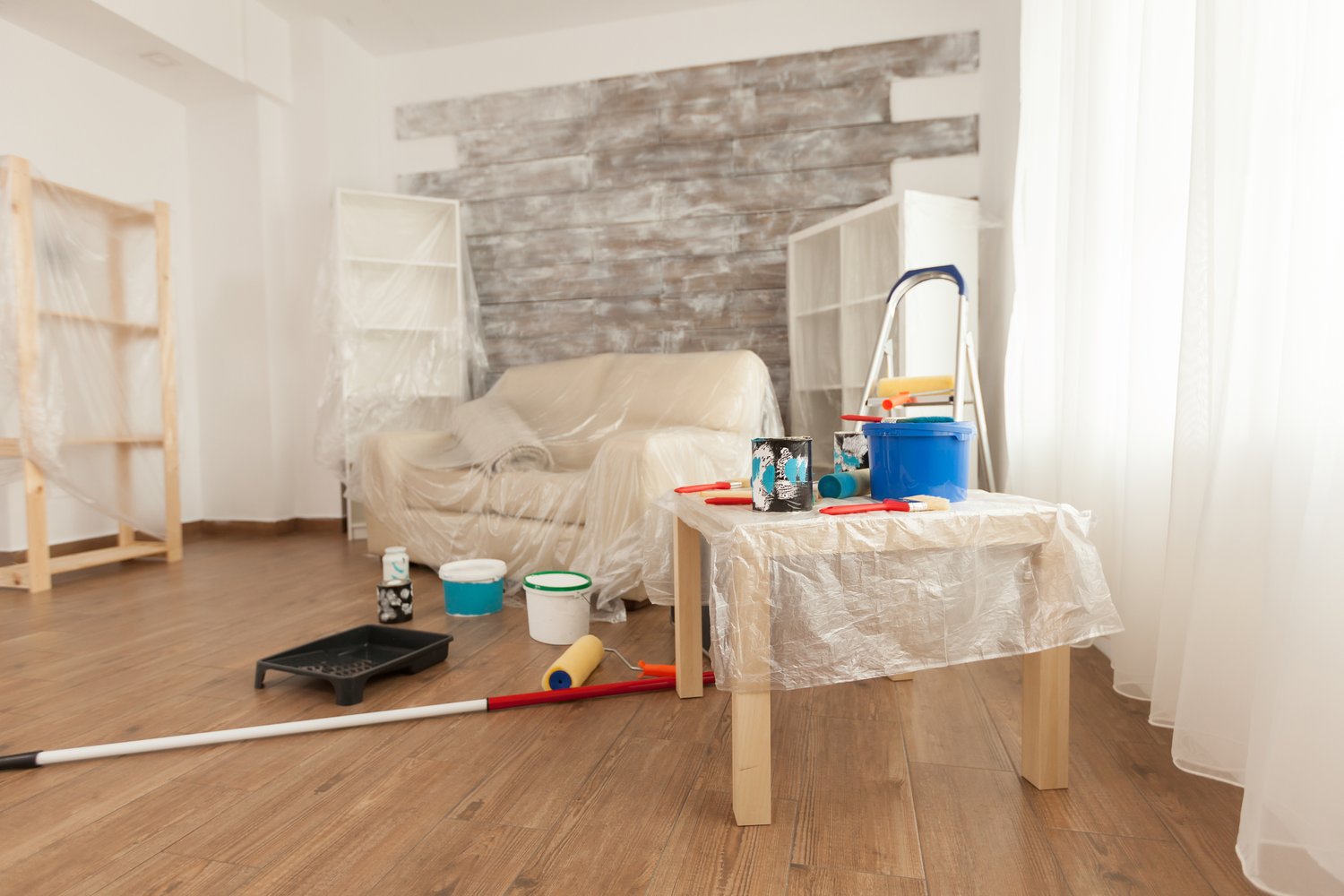Selecting the right flooring for moisture-prone areas like basements and bathrooms can be challenging yet crucial for maintaining your home’s integrity. Water damage can lead to costly repairs, mold growth, and deterioration of your living space. This article explores truly waterproof flooring options that stand up to humidity, splashes, and potential flooding, focusing on luxury vinyl plank (LVP), porcelain and ceramic tile, and concrete solutions. We’ll examine the benefits, drawbacks, and practical considerations for each option to help you make an informed decision for your wet-area flooring needs.
Understanding Waterproof vs. Water-Resistant Flooring
Before diving into specific materials, it’s important to understand the distinction between waterproof and water-resistant flooring. Water-resistant materials can withstand moisture exposure for limited periods but will eventually absorb water and become damaged. Truly waterproof flooring options for basements and other high-moisture areas are completely impervious to water penetration, regardless of exposure time. These materials won’t warp, buckle, or develop mold when subjected to water, making them ideal for basements and bathrooms where moisture is a constant concern.
When considering basement flooring options, remember that below-grade spaces present unique challenges due to ground moisture, potential flooding, and higher humidity levels. The best flooring for bathrooms must also contend with regular splashes, high humidity from showers, and occasional overflows. Your selection should balance waterproof performance with aesthetic appeal and practical considerations like comfort, maintenance, and installation requirements.
Luxury Vinyl Plank (LVP): Style Meets Waterproof Performance
Luxury vinyl plank (LVP) has revolutionized the waterproof flooring market with its combination of authentic wood-look appearance and complete waterproof protection. An LVP waterproof review reveals that this modern flooring option consists of multiple layers, including a rigid core that prevents water penetration and dimensional changes. The top wear layer protects against scratches and stains, while the printed design layer can mimic natural materials with impressive realism.
For basement applications, LVP offers the warmth and visual appeal of wood without the susceptibility to moisture damage. The floating installation method makes it easier to remove and replace if flooding does occur. In bathrooms, LVP provides a comfortable underfoot feel that’s warmer than tile while maintaining complete waterproof integrity. Additionally, most LVP products feature interlocking systems that create a watertight seal between planks, preventing moisture from seeping through to the subfloor.
One significant advantage of LVP is its relatively simple installation process, which can reduce labor costs when working with professional installers found through platforms like AskHomey. However, quality varies widely between brands, so researching specific products and warranties is essential when selecting LVP for moisture-prone spaces.
Porcelain and Ceramic Tile: The Time-Tested Waterproof Solution
When examining porcelain tile waterproof benefits, it’s clear why this material has been a bathroom and basement staple for centuries. Porcelain tiles are fired at extremely high temperatures, resulting in a dense, non-porous surface that naturally repels water. Ceramic tiles offer similar benefits but are slightly more porous than their porcelain counterparts, though both provide excellent waterproof performance when properly installed.
The waterproof integrity of a tile installation largely depends on the grout and setting materials. Modern epoxy grouts provide superior water resistance compared to traditional cement-based options, creating a more completely waterproof system. For basement applications, larger format tiles reduce the number of grout lines, minimizing potential weak points where moisture might penetrate.
Beyond their exceptional water resistance, porcelain and ceramic tiles offer incredible durability and design versatility. From mimicking natural stone to bold patterns and colors, tile allows homeowners to achieve virtually any aesthetic in their bathroom or basement. The hard surface withstands heavy traffic and resists scratches and stains, though it can feel cold and hard underfoot unless paired with radiant floor heating systems.
Concrete Floors: Embracing Industrial Waterproof Elegance
Concrete floor basement bathroom solutions offer a naturally waterproof option with contemporary industrial appeal. In basements where concrete slabs already serve as the subfloor, properly sealed concrete can be transformed into an attractive finished surface. Modern techniques like polishing, staining, and stamping elevate concrete from utilitarian to sophisticated, making it suitable for both basement and bathroom environments.
The key to waterproof concrete floors lies in proper sealing and maintenance. High-quality concrete sealers create an impermeable barrier that prevents moisture absorption while also protecting against stains. For bathroom applications, non-slip treatments can address safety concerns related to wet surfaces. Concrete’s thermal mass properties make it an excellent conductor for radiant floor heating systems, addressing the coldness often associated with this material.
One significant advantage of concrete floors is their durability and longevity. When properly installed and maintained, a concrete floor basement bathroom solution can last indefinitely. However, installation requires specific expertise, particularly for decorative treatments, so hiring experienced professionals is essential for satisfactory results.
Choosing the Right Waterproof Flooring for Your Space
The best flooring for bathrooms and basements ultimately depends on your specific circumstances, including budget, aesthetic preferences, existing subfloor conditions, and installation considerations. For DIY enthusiasts, LVP often presents the most accessible option, while tile and decorative concrete generally require professional installation for optimal waterproof performance.
Consider how each space is used when making your selection. High-traffic basement areas might benefit from the durability of porcelain tile or sealed concrete, while a basement bedroom might be more comfortable with the warmth of luxury vinyl plank. In bathrooms, all three options provide excellent waterproof performance, making aesthetic preference and comfort the deciding factors.
For more tips and to connect with reliable home service professionals, follow AskHomey on Facebook and Instagram.



